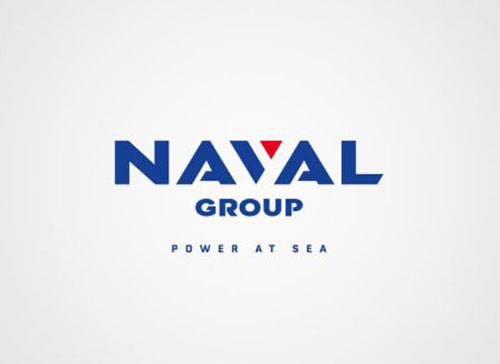France’s Naval Group announced the creation of its Naval Innovation Hub to promote disruptive innovation to adapt to the acceleration of innovation cycles and to the need for increased research responsiveness.
Staying at the forefront of innovation is essential for competitiveness. The creation of the Naval Innovation Hub at the end of 2018 made it possible to develop new growth drivers by exploring new markets and new methods of work organization. Its mission is to help imagine and develop the future of naval defense by rapidly transforming high-potential concepts and technologies into innovative and concrete solutions with high added value for customers, but also for the competitiveness of Naval Group.
Entirely autonomous in the management of its projects and imbued with an entrepreneurial culture, the Naval Innovation Hub brings together a multidisciplinary team from a variety of backgrounds. It’s an opportunity to attract atypical intelligences. They support ideas at all stages of their development: project formulation, customer desirability analysis, study of the viability of the business model… The idea is then transmitted to the innovation entities of the Naval Group ecosystem.
Simon Payet, Disruptive Innovation Manager at the Naval Innovation Hub, said: “In 4 months, 3 projects have been supported. For example, we have accelerated a “Proof of Concept” project on an innovative technology for guiding drones to land on surface vessels in operation. The challenge was to build a first demonstrator in 2 months.”
Located in the start-up accelerator Village by CA-Paris, the Naval Innovation Hub is also fully integrated in the group, providing employees with coaching tools and methods and gathering the best ideas.
Partnerships enrich internal R&D. Naval Group has thus created an active community around its ecosystem. These academics, training centers, innovative SMEs, start-ups and incubators accelerate the group’s operations and gather around unifying events such as the Naval Innovation Days.
Internally, all employees, ideators, intrapreneurs and makers are called upon to participate, overcoming barriers in the name of creativity. The Naval Innovation Hub allows disruptive innovation to be an integral part of Naval Group’s culture and is rooted in reality by supporting projects that meet the needs of the group and its partners.
Based on an agile operating mode, the Naval Innovation Hub enables Naval Group to acquire and implement good reflexes and effective practices on disruptive innovation, without forgetting the right to failure or “Test & Fail”, an essential step in any ambitious approach to disruptive research. With a squad team approach and a mobilized external ecosystem, it is positioned as an innovation facilitator.
“The collaboration with a Parisian start-up helped a Naval Group team design digital models to significantly improve the user experience. The models were presented to the customer within a few weeks,” Simon Payet explained.
To provide a fresh perspective on the Hub’s development and projects, the Executive Committee (COMEX) of Naval Group decided that the governance committee of the Naval Innovation Hub would be composed of a majority of members from outside of the company and from a wide range of dynamic economic sectors. In particular, it will be responsible for challenging the potential for disruption of innovation projects and for giving the Hub the necessary perspective to operate.
Naval Group is a European leader in naval defense. As an international high-tech company, Naval Group uses its extraordinary know-how, unique industrial resources and capacity to arrange innovative strategic partnerships to meet its customers’ requirements.
The group designs, builds and supports submarines and surface ships. It also supplies services to shipyards and naval bases. In addition, the group offers a wide range of marine renewable energy solutions. Attentive to corporate social responsibility, Naval Group adheres to the United Nations Global Compact.
In 2018, the group reported revenues of €3.6 billion and has a workforce of 14,860.






















